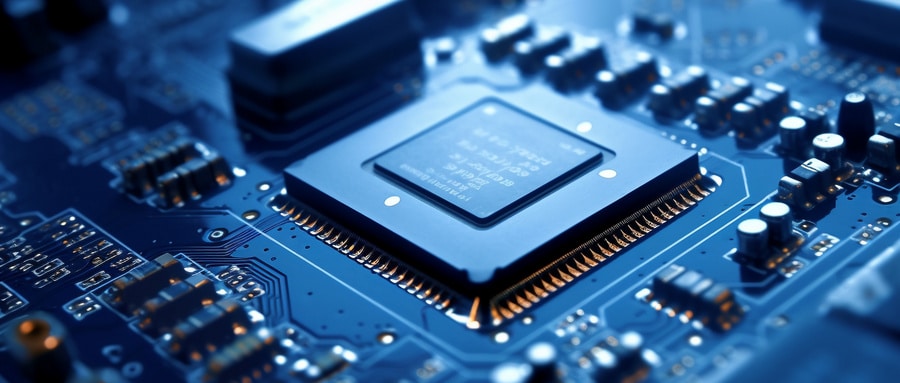Mastering the Potential of Rogers PCBs: A Comprehensive Guide to High-performance Circuitry
Printed Circuit Boards (PCBs) have revolutionized electronic circuitry, replacing wired boards with their compact yet efficient designs. Rogers Corporation has become an essential player in this change through their high-frequency PCBs constructed for optimal performance. This article serves as a comprehensive overview to enhance your understanding of Rogers PCBs as a beacon in high performance circuitry.
1. Understanding Rogers PCBs:
Rogers PCBs are ideal for high-frequency applications due to their low signal loss and are commonly utilized when standard PCB materials fail. We will explore every facet that sets Rogers PCBs apart – material properties, structural design features and implementation techniques so you can fully appreciate its vast potential.
2. Material Properties:
Rogers PCBs’ success can be found in their exclusive materials like RT/duroid, RO4000 and RO3000 which boast superior Dielectric Constant (Dk), loss tangency stability and low electrical signal losses. Furthermore, these materials possess exceptional thermal management properties for increased circuit stability in high temperature conditions.
3. Advanced Structure and Design:
Rogers PCBs boast advanced structural designs to further their reputation for high-performance circuitry, featuring multilayer capabilities to accommodate complex circuits across multiple layers while still remaining compact for increased electrical performance.
4. Application of Rogers PCBs:
Rogers boards are high-frequency PCBs that find wide application across industries including telecom, automotive and aerospace. These PCBs are particularly effective at supporting RF applications as well as military-grade equipment, 5G networks and RADAR communication systems.
5. Rogers PCBs offer several advantages:
Rogers PCBs stand out for their distinctive properties that make them highly beneficial in multiple ways. They easily support high-frequency applications while showing minimal electrical signal loss, and boast superior thermal management to ensure components reach their full potential without risking overheating potentials.
6. Overcoming Challenges and Implementing Solutions:
Rogers PCBs may boast high performance, but they do face unique obstacles in certain applications. Cost and surface wear resistance may present roadblocks; however, with advances in development underway and strategic deployment practices taking place over time these challenges can be effectively overcome.

Conclusion:
Rogers PCBs have earned themselves an esteemed place among high-frequency, high-performance circuitry. Due to their distinctive properties and wide applicability, these boards have proven invaluable assets in the electronics industry. Therefore, every enthusiast, engineer, or tech enterprise should understand and take full advantage of these boards’ potential to experience their true power at its fullest extent.
After much consideration, it has become evident that Rogers PCBs hold great promise of revolutionizing our technological landscape. While challenges do exist, their future appears bright and they should receive significant consideration.
FAQ:
- What is a Rogers Printed Circuit Board?
A Rogers Printed Circuit Board refers to a type of Printed Circuit Board (PCB) that is made using the high frequency laminates produced by Rogers Corporation. Rogers laminates, such as RO4350B and RO4003C, are known for their lower dielectric loss and are very useful for high frequency applications. - Why use Rogers Printed Circuit Boards?
Rogers Printed Circuit Boards offer excellent high-frequency performances, low signal loss, and stable electrical properties over a wide range of frequencies. They are ideal for applications where performance and reliability are critical, such as in aerospace, automotive, and telecommunications industries. - What distinguishes Rogers PCBs from regular FR4 PCBs?
The primary difference lies in the material properties. Rogers laminates, which are ceramic-filled thermoset composites, retain their electrical and mechanical properties more consistently than standard FR4 across varying frequencies, temperatures, and humidities. - Are Rogers PCBs more expensive?
Yes, Rogers Printed Circuit Boards typically cost more than standard FR4 PCBs due to their superior high-frequency properties. However, the additional cost may be justified in applications that require stable performance at high frequencies. - How is the manufacturing process of Rogers Printed Circuit Boards different from regular PCBs?
The basic processes remain the same (etching, drilling, plating, etc.). However, Rogers material has a lower tolerance for heat compared to FR4, so the lamination process must be controlled more carefully. - Where are Rogers Printed Circuit Boards typically used?
Rogers Printed Circuit Boards are typically used in RF and microwave applications due to their high-frequency performance. They find use in radar systems, cellular base stations, antennas, RF amplifiers, and more. - Can Rogers Printed Circuit Boards be multi-layered?
Yes, Rogers Printed Circuit Boards can be single, double, or multi-layered. The design depends on the complexity and requirements of the specific application. - Can Rogers PCBs be mixed with other PCB materials?
Yes, it is possible to create a hybrid or mixed construction using Rogers material and standard FR4. This can be a cost-effective solution when high-frequency performance is only needed in certain parts of the circuit. - What design considerations should be taken into account with Rogers PCBs?
Since Rogers material has different properties compared to regular FR4, factors such as thermal expansion, dielectric constant, and thermal conductivity should be taken into account during the design phase. - How do I find a reliable Rogers PCB manufacturer?
When seeking a Rogers PCB manufacturer, consider factors such as experience, technology capabilities, quality control systems, and customer service. It’s also beneficial to work with manufacturers who have direct experience with Rogers materials.























